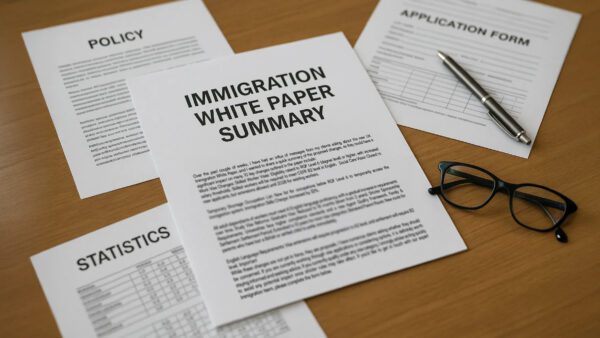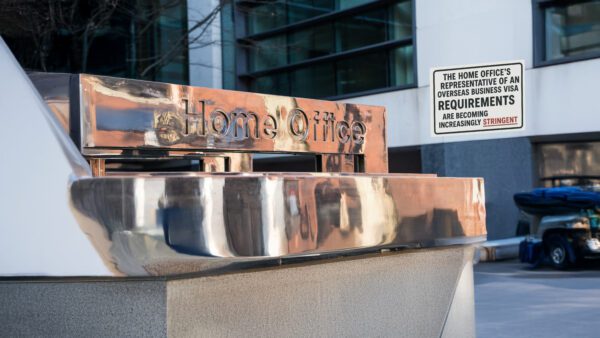Latest Posts

No Change, Please: The Initial Results of the Law Commission’s Consultation on Security of Tenure are in
Interim results of the consultation on reforming the Landlord and Tenant Act 1954 confirm that no significant change to the existing law will be forthcoming.
The Consultation
From 19 November 2024 to 19 February 2025, the Law Commission ran a significant consultation on whether business tenancies in England and Wales should continue to benefit from security of tenure. Security of tenure is a right under the Landlord and Tenant Act 1954 (the “1954 Act“) which gives business tenants the option to renew their lease, or the capacity to be financially compensated where this is not possible.
The initial results are in, and the Law Commission has posted its interim statement, addressing the direction the consultation and any resulting reform is likely to take.
The current system is an opt-out model, where business leases automatically include this right to renew, unless it is expressly excluded from the lease.
The Options for Reform
The models of security of tenure proposed in the consultation were:
- No reform, retaining the current opt-out model; or
- Reversing the current model and opt-in; or
- Abolishing security of tenure; or
- Mandatory security of tenure.
The Law Commission has provisionally concluded that the existing ‘contracting-out’ model is the correct approach. The arguments in favour of retaining this were convincing and received the broadest support among consultees.
Many consultees expressed a view that the current model achieves the optimal balance between landlords and tenants. Many also voiced concerns that altering the model could lead to unnecessary disruption in the commercial leasehold market.
Other Key Issues Addressed in the Statement
Excluded tenancies
The 1954 Act currently excludes certain types of tenancies, for instance, agricultural tenancies, and the consultation asked whether the current list of excluded tenancies is still appropriate. The consultees were in favour of the current law and the Law Commission provisionally agrees.
Duration of Tenancies
The 1954 Act also excludes short tenancies of up to 6 months, and this was also consulted on. Views were mixed, but consensus seemed to favour increasing the threshold to 2 years, to give more flexibility to the short-term lettings market. The Law Commission provisionally agrees.
The Future
Substantial changes to the doctrine of security of tenure would have created uncertainty for both existing business leases and those under negotiation at the time of reform.
Property owners and developers value flexibility, which explains the limited appetite for sweeping changes to the current framework.
While often regarded as an administrative burden, with the high thresholds for landlords to establish grounds (f) and (g) remaining a source of frustration, the current model has been rigorously tested, and continues to evolve through case law.
Ultimately, the Law Commission’s final report will present recommendations for reform based on the consultees’ feedback. Any legislative reform will still need to be implemented in the usual way, passing through and receiving Parliamentary approval.
To contact our property litigation team, please contact us by completing the form below.
Read More
Immigration White Paper Summary
Over the past couple of weeks, I have had an influx of messages from my clients asking about the new UK Immigration White Paper, and I wanted to share a quick summary of the proposed changes, as they could have a significant impact on many.
10 key changes outlined in the paper include:
Work Visa Changes:
- Skilled Worker Visas: Eligibility raised to RQF Level 6 (degree level) or higher, with increased salary thresholds. Skilled workers will be required to meet CEFR B2 level in English.
- Social Care Visas: Closed to new applicants, but extensions allowed until 2028 for existing workers.
- Temporary Shortage Occupation List: New list for occupations below RQF Level 6 to temporarily access the immigration system.
- Immigration Skills Charge: Increased by 32%.
- All adult dependants of workers must meet A1 English language proficiency, with a gradual increase in requirements over time.
Study Visa Reforms:
- Graduate Visa: Reduced to 18 months (down from 2 years).
- Stricter Sponsorship Requirements: Universities face higher compliance standards and a new Agent Quality Framework.
Family & Settlement:
- Settlement Period: Extended to 10 years for most visa categories.
- Bereaved Parent Route: New route for parents who have lost a British or settled child to settle immediately.
- English Language Requirements: Visa extensions will require progression to A2 level, and settlement will require B2 level.
Important
While these changes are not yet in force, they are proposals. I have numerous clients asking whether they should be concerned. If you are currently working through visa applications or considering options, it is definitely worth staying informed and seeking advice. If you currently qualify under any visa category, I strongly advise acting quickly to avoid any potential impact once stricter rules may take effect.
If you’d like to get in touch with our expert Immigration team, please complete the form below.
Read More
Representative of an Overseas Business Visa (Extension / Settlement) – The Home Office’s Increasingly Stringent Requirements
The representative of an Overseas Business visa has long been an essential route for overseas businesses looking to establish a presence in the UK. However, with the route now closed to new applicants, those seeking extensions or settlement under this category are facing an increasingly strict scrutiny process from the Home Office.
Immigration practitioners, myself included, have observed a notable shift in the level of detail being demanded from applicants. Many are being called for interviews, and refusals are becoming more common. The Home Office’s approach suggests that they are keen to ensure that only genuine representatives of overseas business continue to benefit from this route. Consequently, they are requesting extensive documentation, much of which is neither explicitly listed in the Immigration Rules nor mentioned in official guidance. This applies regardless of whether you are applying for an extension or settlement.
The Expanding List of Documentation Requests
Beyond the standard supporting evidence, the Home Office is now demanding a wide range of additional business and financial records, often requiring significant time to compile. The Home Office places significant emphasis on assessing whether the UK branch or subsidiary maintains active contracts and a client base within the UK, demonstrating its continued commercial viability and relevance in the market.
Commonly requested documents include:
- Detailed descriptions of business activities, contracts, and invoices from UK clients.
- Proof of financial transactions, financial statements, invoices, and VAT returns.
- Proof of business premises, including tenancy agreements and photographs.
- Employment records for UK-based staff, including job descriptions, contracts, payslips, PAYE and RTI reports.
- A full breakdown of the applicant’s role, detailing day-to-day duties and responsibilities in the UK.
- Advertising and promotional materials, such as website content and marketing documents, and public-facing communications.
- Overseas business documents, including Memorandum of Association, Articles of Association, shareholding details, and proof of active trading.
This is by no means an exhaustive list, but it highlights the extent to which applicants must now be prepared to substantiate their role and the legitimacy of the UK business.
Home Office Deadlines and the Importance of Preparation
The Home Office typically provides 10 working days to supply additional documentation once requested. However, it is possible to request an extension if more time is needed. That said, it is always advisable to be fully prepared in advance to avoid rushing and potentially overlooking critical details.
The last thing you want is to be pushed into an interview stage due to incomplete or unclear documentation. These interviews can be tricky and exhausting, often leading to further scrutiny or complications that could impact your application outcome. Avoiding an interview wherever possible should be a key objective, and thorough preparation is the best way to achieve this.
Why Is the Home Office Taking a Harder Stance?
The increased level of scrutiny appears to stem from a desire to tighten compliance and prevent misuse of the visa system. As the route is now closed to new applicants, the Home Office likely views extensions and settlement applications as an opportunity to reassess whether those already in the UK still meet the eligibility criteria.
Unfortunately, some applicants are unprepared for the depth of investigation that now accompanies an extension or settlement applications. Even legitimate businesses with genuine UK operations can face difficulties if their documentation does not fully align with what the Home Office expects to see.
Seek Professional Legal Guidance
Given the complexity and unpredictability of these document requests, seeking expert legal assistance is more crucial than ever. A well-prepared application, supported by the right evidence, significantly reduces the risk of delays, interviews, or refusals.
As an immigration lawyer, I have successfully guided numerous clients through this challenging process, ensuring they provide the necessary documentation while avoiding unnecessary pitfalls. My advice to any Sole Representative visa holder is simple: do not take your extension or settlement application lightly. Even if your business is fully compliant, failing to anticipate the Home Office’s demands can put your immigration status at risk.
If you are preparing to extend your visa or apply for settlement, now is the time to get expert advice. The stakes are high, and the margin for error is smaller than ever. Reach out to ensure that your case is presented in the strongest possible light, before the Home Office puts your business under the microscope.
Read More